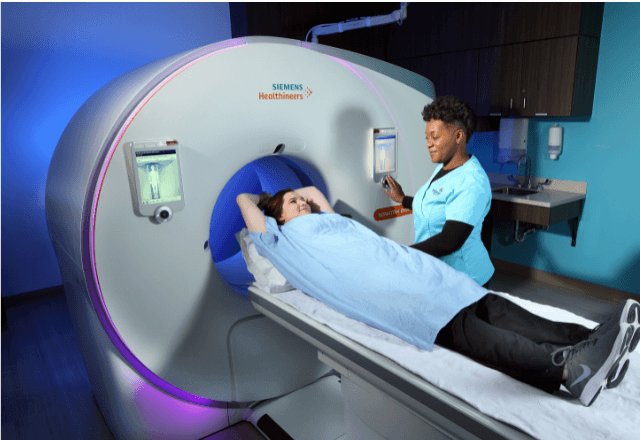Ocular Ultrasound Imaging in Veterinary Ophthalmology
The use of ocular ultrasound imaging in veterinary ophthalmology has become an indispensable tool for diagnosing a variety of ocular diseases and abnormalities. This non-invasive technique is particularly useful when dealing with opaque media, such as those seen in cases of trauma, cataracts, or corneal ulcers where traditional methods like slit lamp examination or funduscopy are limited.
Ocular ultrasound imaging provides detailed cross-sectional images of the internal structures of the eye, including the lens, retina, vitreous humor, and choroid. It enables precise visualization and measurement of these structures, which is crucial for accurate diagnosis and treatment planning in veterinary ophthalmology.
The process involves placing a transducer over the cornea or conjunctiva to transmit sound waves into the eye. These waves reflect off internal boundaries within the ocular structures, creating an image that can be interpreted by the clinician. This technology is especially valuable for detecting small tumors, intraocular foreign bodies, and inflammatory conditions that may not be apparent through other means.
Compliance with international standards such as ISO 15197 ensures the reliability and accuracy of ultrasound imaging devices used in veterinary settings. The use of this method aligns perfectly with the objectives outlined by these standards for diagnostic accuracy and patient safety.
The role of ocular ultrasound imaging extends beyond mere diagnosis; it also plays a pivotal part in monitoring the progression of certain diseases over time, providing valuable insights into therapeutic efficacy. By understanding how specific treatments impact individual patients' eyes, veterinarians can tailor their approaches more effectively, enhancing overall outcomes for affected animals.
In summary, ocular ultrasound imaging represents a significant advancement in veterinary ophthalmology, offering unparalleled diagnostic capabilities that complement traditional examination techniques. Its importance cannot be overstated as it contributes substantially to improved care and better health outcomes for pets suffering from eye disorders.
Applied Standards
The use of ocular ultrasound imaging adheres strictly to international standards such as ISO 15197, which sets benchmarks for diagnostic accuracy and patient safety. These guidelines ensure that all equipment used meets rigorous quality control measures before being deployed in clinical settings.
Additionally, adherence to EN 60601-2 ensures that ultrasound machines meet stringent electromagnetic compatibility requirements, reducing interference issues that could affect image clarity or data integrity during examinations.
The American College of Veterinary Ophthalmologists (ACVO) also provides recommendations on best practices for using ocular ultrasound imaging in conjunction with other diagnostic tools. Compliance with these standards guarantees consistent and high-quality results across different facilities, contributing to more reliable diagnoses and better patient care.
Benefits
The adoption of ocular ultrasound imaging brings numerous advantages to both veterinary practices and their patients:
- Non-invasive: Unlike surgical procedures or biopsies, ocular ultrasound does not require incisions, minimizing stress on the animal.
- Precision: Provides clear images of internal structures even when they are obscured by opaque media.
- Early Detection: Allows for early identification and monitoring of diseases before symptoms become apparent.
- Guidance during Surgery: Helps surgeons navigate complex anatomical areas with greater precision, reducing risks associated with manual probing or guesswork.
- Objective Data: Offers quantifiable measurements that can be compared over time to assess changes in the condition of the eye.
- Safety: Reduces the need for anesthesia by allowing some examinations without sedation, which is beneficial for younger animals or those with compromised respiratory systems.
These benefits underscore why ocular ultrasound imaging has become an essential component of modern veterinary ophthalmology practice.
Use Cases and Application Examples
Ocular ultrasound imaging finds extensive application in various scenarios within veterinary medicine:
Detection of Lens Opacities: This technique is particularly useful for identifying early signs of cataracts, enabling timely intervention to preserve vision.
Intraocular Foreign Bodies: Accurate localization and characterization help guide surgical removal without damaging surrounding tissues.
Inflammatory Conditions: Monitoring inflammation in conditions like uveitis provides critical information about the severity and response to treatment.
Tumors: Detecting small tumors, especially those located deep within the ocular structures, ensures early detection and appropriate management.
Vitreous Hemorrhage: Visualizing vitreous hemorrhages allows for better assessment of retinal detachment risks or other complications.
Aqueous Humor Dynamics: Understanding the dynamics of aqueous humor flow can aid in diagnosing glaucoma and monitoring its progression.
In each case, ocular ultrasound imaging provides invaluable data that supports comprehensive patient care. By incorporating this technology into routine practices, veterinarians can enhance diagnostic capabilities significantly.





